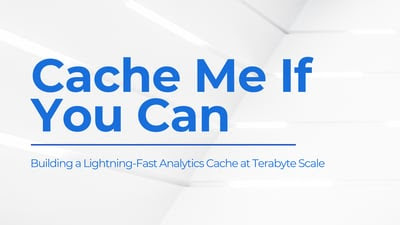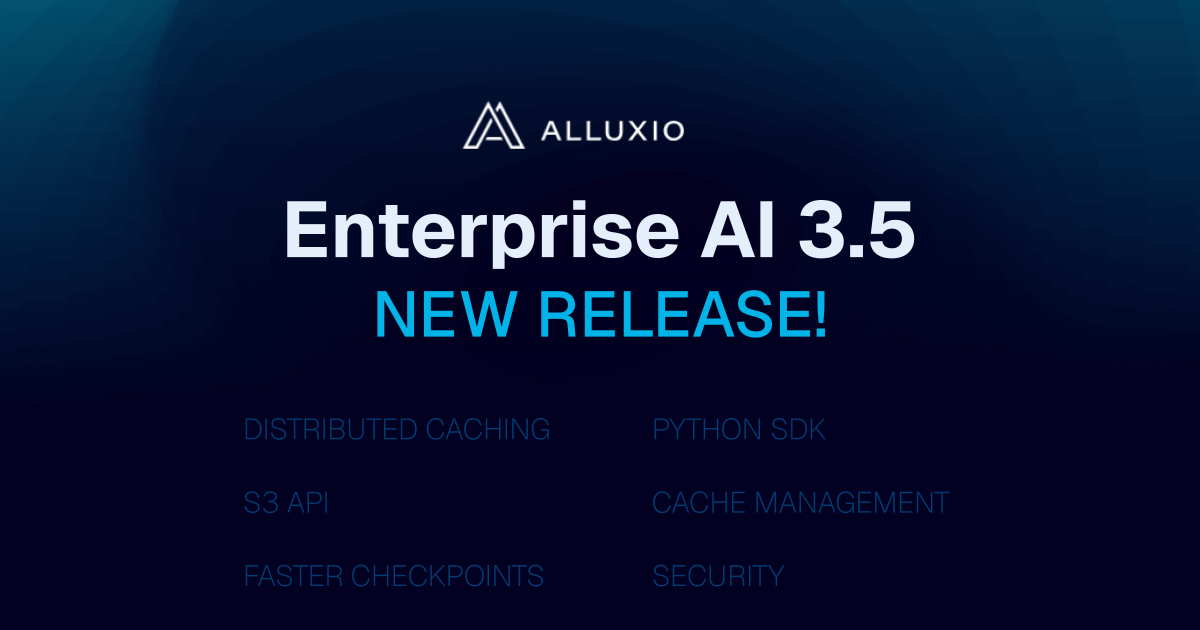Blog

Suresh Kumar Veerapathiran and Anudeep Kumar, engineering leaders at Uptycs, recently shared their experience of evolving their data platform and analytics architecture to power analytics through a generative AI interface. In their post on Medium titled Cache Me If You Can: Building a Lightning-Fast Analytics Cache at Terabyte Scale, Veerapathiran and Kumar provide detailed insights into the challenges they faced (and how they solved them) scaling their analytics solution that collects and reports on terabytes of telemetry data per day as part of Uptycs Cloud-Native Application Protection Platform (CNAPP) solutions.

With the new year comes new features in Alluxio Enterprise AI! Just weeks into 2025 and we are already bringing you exciting new features to better manage, scale, and secure your AI data with Alluxio. From advanced cache management and improved write performance to our Python SDK and S3 API enhancements, our latest release of Alluxio Enterprise AI delivers more power and performance to your AI workloads. Without further ado, let’s dig into the details.
.png)

How T3Go's high-performance data lake using Apache Hudi and Alluxio shortened the time for data ingestion into the lake by up to a factor of 2. Data analysts using Presto, Hudi, and Alluxio in conjunction to query data on the lake saw queries speed up by 10 times faster.

We’re pleased to announce the general availability of Alluxio Data Orchestration Hub, your single pane of glass to orchestrate data for analytics and AI. The data ecosystem is complex with the separation of storage and compute across data centers and cloud providers. With this release we’ve made great strides towards simplifying data access and management across multiple environments.
.jpeg)
Unlike HDFS which provides one-copy update semantics or AWS S3 which provides eventual consistency, data consistency in Alluxio is a bit more complicated and depends on the configuration. In short, when clients are only reading and writing through Alluxio, the Alluxio file system provides strong consistency. However, when clients are writing data across both Alluxio and under storage, the consistency may depend on the write type and under storage type.
.jpeg)
This article described how engineers at datasapiens brought down S3 API costs by 200x by implementing Alluxio as a data orchestration layer between S3 and Presto.
.jpeg)
As the third largest e-commerce site in China, Vipshop processes large amounts of data collected daily to generate targeted advertisements for its consumers. In this article, Gang Deng from Vipshop describes how to meet SLAs by improving struggling Spark jobs on HDFS by up to 30x, and optimize hot data access with Alluxio to create a reliable and stable computation pipeline for e-commerce targeted advertising.

In this blog, Derek Tan, Executive Director of Infra & Simulation at WeRide, describes how engineers leverage Alluxio as a hybrid cloud data gateway for applications on-premises to access public cloud storage like AWS S3.

Alluxio 2.3.0 focuses on streamlining the user experience in hybrid cloud deployments where Alluxio is deployed with compute in the cloud to access data on-prem. Features such as environment validation tools and concurrent metadata synchronization greatly improve Alluxio’s functionality. Integrations with AWS EMR, Google Dataproc, K8s, and AWS Glue make Alluxio easy to use in a variety of cloud environments. In this article, we will share some of the highlights of the release. For more, please visit our release notes page.
.jpeg)
In this article, Honghan Tian describes how engineers in the Data Service Center (DSC) at Tencent PCG (Platform and Content Business Group) leverages Alluxio to optimize the analytics performance and minimize the operating costs in building Tencent Beacon Growing, a real-time data analytics platform.

This article presents the collaboration of Alibaba, Alluxio, and Nanjing University in tackling the problem of Deep Learning model training in the cloud. Various performance bottlenecks are analyzed with detailed optimizations of each component in the architecture. Our goal was to reduce the cost and complexity of data access for Deep Learning training in a hybrid environment, which resulted in over 40% reduction in training time and cost.

.png)
.jpeg)